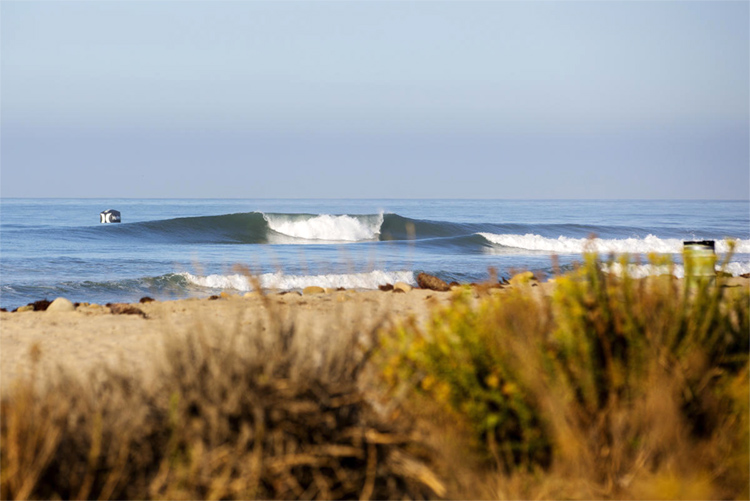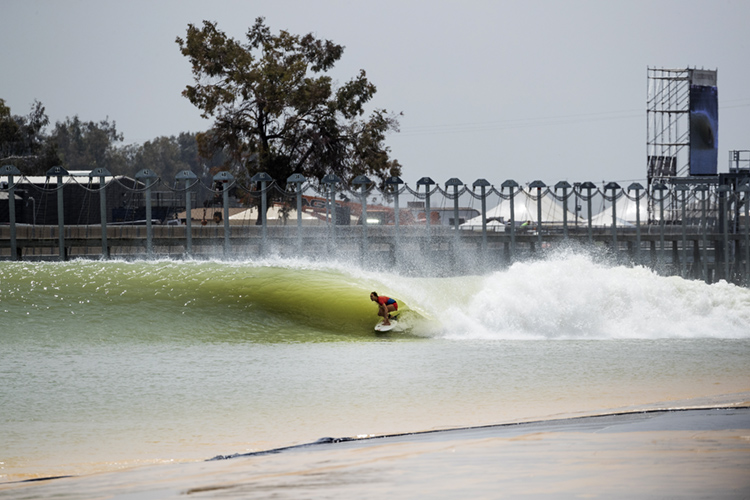April signals the beginning of the World Surf League (WSL) season where elite athletes ride the best waves on planet earth.
Were we to dream of a sport with the least environmental footprint, surfing would likely be at the top of the list - biological energy in the form of waves and human muscle powers the entire system.
No lifts, no lights, no stadiums, no fields, no engines, no gear except for a surfboard, shorts and the occasional wetsuit.
In addition to being low impact, surfing is energy harnessing.
Two winters ago the world record was set for the largest wave ever surfed on an eighty-foot behemoth in northern Portugal.
That wave alone packed 120,000 MW of energy capable of powering 30 million smartphones.
With news on the climate front being mostly negative - 2018 saw a 1.7 percent growth in CO2 emissions, record high ocean heat content, and global temperatures rose to 1°C above pre-industrial levels - surfing reminds humanity of the power of biological energy for achieving net-zero emissions.
Last December, after a riveting final in Hawaii that saw Gabriel Medina crowned with his second world title, the World Surf League joined the International Olympic Committee, FIFA and other major sports organizations in signing the Sports Climate Action Initiative in Poland.
The agreement was a pledge to measure, report and reduce greenhouse gas emissions in line with the well below 2-degree scenario enshrined in the Paris Agreement.
With their universal appeal, sports can inspire millions of people around the world to take climate action.
This is however not the first time that sports organizations have pledged to reduce their carbon footprint, and the results have been mixed.

Formula One, FIFA and WSL
Take car racing for example, by necessity a high-emission activity.
In 2007, for every kilometer, a Formula One car traveled it emitted nine times more CO2 than a family vehicle.
Since then hybrid turbo engines that harness electricity from braking and heat have replaced gas guzzling V8 motors, resulting in a 35 percent reduction of CO2 emissions.
On the other side of the spectrum stands FIFA, accused of greenwashing - using deception to promote an environmentally responsible image - through questionable carbon offsetting schemes during the Brazil and Russia World Cups.
To make things worse, it is Qatar in 2022 that promises to be an ecological disaster: nine brand new air-conditioned football stadiums are being built for $220 billion in the middle of the desert.
Even if the stadiums were 100 powered by renewables, it wouldn't make them carbon neutral. It takes fossil fuel energy to develop renewable energy.
Two hundred tons of metallurgical coal is required to build a wind turbine.
Chinese manufacturers report between 50 to 70 grams of CO2 equivalent per kilowatt-hour to produce solar panels. Renewable energy is much cleaner than fossil combustion, but it is not carbon-free.

The Surf Ranch
The WSL would be among the most promising signers of the Sports Climate Action Initiative if it weren't for last year's decision to displace Trestles Beach, California's professional surfing event, with a wave machine called Surf Ranch.
A wonder of technology developed by eleven-time world champion Kelly Slater, the ranch consists in a locomotive on elevated rails that drags a 100-ton hydrofoil through an artificial lagoon to power a perfect 6-foot wave.
The $30 million investment is democratizing the sport by making it accessible to landlocked audiences and paving the way for a new Olympic event.
Slater's Ranch is also adding surfing to the list of greenwashed professional sports.
The WSL suggests that because the Surf Ranch "is 100 percent powered by solar energy through PG&E's Solar Choice" it is good for the environment.
There are serious problems with this claim. PG&E, which stands for Pacific Gas and Electric and recently filed for bankruptcy due to its responsibility in causing the devastating 2017 and 2018 California forest fires, has only 33 percent of renewables in its portfolio.
When the Surf Ranch draws its estimated 2MW energy surge to get a wave going, it is depriving the equivalent of 1,500 homes of using that same clean energy.
For every wave generated by Slater's hydrofoil it is coal, natural gas or nuclear that must make up for the energy difference somewhere else.
The Surf Ranch does produce carbon emissions.

Getting Back To Trestles
While we can stand in awe of the amazing potential of wave machines for the future of surfing, we should not be deceived into thinking that they are good for the environment.
In order to come anywhere close to meeting net-zero emissions by 2050 in line with Paris Agreement targets, renewables need to urgently replace all of our fossil-fueled energy production and not only meet new energy needs.
Adding air-conditioned soccer stadiums in the desert and wave machines 100 miles from California's coast will only delay the replacement of fossil fuels.
As a society, we must choose between endless consumption or a two-degree world. You can't have your cake and eat it too.
One of our greatest hopes for meeting the Paris Agreement goals lies in our ability to harness free biological energy, for which surfing is a powerful symbol.
Not everyone can surf, but many of us can perhaps use rain for irrigation, wind for ventilation, trees for temperature regulation, bike to work or walk to the corner store.
If the WSL wants to be truly ecological, it should return to Trestles Beach and embrace nature's carbon-free waves.
You can't save the planet and "surf ranch" it too.
Words by Ricardo Simmonds | PhD candidate in Environmental Science at University of Colorado Boulder
